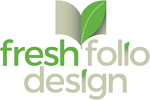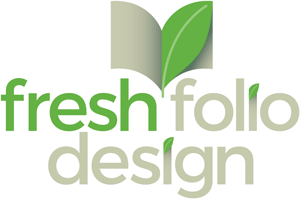Initial Discussion
While our primary focus is print design, when we were approached by Blain’s Farm & Fleet to design graphics for their Toyland campaign we were thrilled for the opportunity. As a family-owned, specialty discount retailer in the Midwest, Blain’s Farm & Fleet has an annual tradition of transforming a section of all 40 stores into a Toyland area beginning in late October.

A series of banners, floor decals, endcaps, and aisle signage are specifically used for the Toyland transformation. However, they wanted to enhance some of the signage by incorporating motion. Since their internal design team did not have time to devote to this challenge, they met with us to see if we would be able to solve this problem and deliver the signage they needed. While we did not have specific experience creating motion signage, we were eager to delve into this format and were committed to learning what we didn’t know, while still applying our knowledge of design to create a strong solution for this project.
The Problem
As we discussed what was needed, we identified 2 Phases of work.
PHASE 1: Update the artwork of the 4 elf characters. The existing artwork had been in circulation for many years and was in need of a refreshed approach.
PHASE 2: Use the updated elf graphics and create 10 individual displays that utilized motion. These signs needed to be displayed on top of the gondolas (shelving unit) so size and weight were factors to consider.
Additionally, the set up of these 10 units needed to be simple enough that the employees at each of the 40 stores could quickly and easily unpack and set up the displays.
While Blain’s did have an established print vendor that we would be able to work with regarding the production of the graphic materials, the engineering of the motions and acquiring the materials needed to perform the motions would require a new vendor that we would need to determine.
As designers, it is our job to solve problems. While some people mistakenly think design is just about creating “pretty pictures” we know that finding the best visual solution is what makes a good designer. This includes knowing when to partner with other vendors. We knew we would be looking to partner with specific vendors for the print and motor needs of this project, however, we did see a fit for Rebecca’s illustration skills to serve this project.
PHASE 1
The first problem we needed to address was a refresh of the elf graphics.
These 4 elf characters have been used in Blain’s marketing materials for several years, from commercials to advertisements. Jingles, Otto, Pipper & Gingersnap are a recognized part of the Blain’s Farm & Fleet family.
However, the renderings left a lot to be desired and the time had come to invest in a refresh. The challenge was to address the issues that weren’t working with the current graphic, but still keep the original characters recognizable.
Since the goal was to refresh the graphics, we identified the issues needing to be addressed and determined which elements would be kept.
In order to keep each character recognizable from previous years, we would retain the style & color of the clothing, as well as the eye & hair color of each specific character. While the general shape of each character would remain the same, we would revise the size of the torso, arms & legs in order to aid with the various motions of the motored displays.
Since we were addressing the rendering of each character we did minimal pencil sketching, but instead went digital with the first draft that we sent for client review.
This initial round addressed a number of issues. The skin tone was adjusted, the ears were incorporated better with the head, the angles were softened and the overall size of the body was adjusted.
However, our interpretation that the nose on the current graphic was long and pointy was not the direction they wanted to go. They were wanting more of a button nose.
Plus, while our cartoon style was working overall, Blain’s wanted more depth and dimension to the characters, instead of flat color and stylized highlights. For the next round we would give more definition to the facial features, so the head did not look so spherical.
Now that we were getting more clarity on the solution, in addition to making the changes to the original character, Otto, we also applied our learnings to a second character, Pipper.
In order to have flexibility when we got to PHASE 2 (brainstorming motions for the displays) we adjusted how the arms were positioned. The original characters had smaller, stiff arms, so we increased the size and adjusted the position in order to give more options for future graphics.
Once we had approval on the first two characters, we then worked with the final 2 characters. This marked the end of PHASE 1 of the project. We had completed the refresh of all four characters and could begin PHASE 2, concepting 10 new displays that incorporate motion.

While we were working on the refresh of the graphics, we were simultaneously searching for a vendor to partner with regarding the motors needed for this project. We did an exhaustive search using the parameters of the project and found a vendor who had the experience and knowledge that would best help us with this area of this project.
(You can read more about the process of finding that vendor in this blog post.)
PHASE 2
Now that Phase 1 was complete and graphics were approved, it was time to brainstorm motion ideas for each of the 10 displays. There would be some variation in the size and layout of the Toyland area in the 40 stores, but there were some common factors in each store to keep in mind.

The following factors needed to be considered when concepting all the displays:
- The motion couldn’t be too complex because each display needed to be easy enough for someone working at the store (with no prior knowledge) to assemble.
- The final display couldn’t weigh too much because it would be placed on the back of the gondola between the aisles.
- Each display could be no taller than 2 feet or wider than 4 feet.
- Sight lines could be hindered by the height of products on shelf, so motion needed to be focused toward the top of each display.
We familiarized ourselves with the general size of the gondola and looked at our options for how the displays would attach to the structure. It was determined that a magnetic L-Bracket holder could be used to hold each end of the display.
 After reviewing all of the materials regarding the space and the factors we needed to keep in mind for each display, we began sketching out ideas for motions.
After reviewing all of the materials regarding the space and the factors we needed to keep in mind for each display, we began sketching out ideas for motions.
There were two basic motions to consider:
- Rotating in a circle
- Rocking back and forth
While these basic motions were the foundation, the variety within the 10 displays was found by changing how the motor was used with the graphics.
For example, in one display the rocking motion is used to show legs wiggling inside a present, while that same motor is used with different graphics to show an elf dancing.
Once we had some general ideas we worked with the revised elf graphics to create full-color concepts for the team to review.
Each display was made up of 2, 3, or 4 layers depending on the type of movement required. Prior to creating full scale mock-ups we wanted to ensure that each display would move as intended, so we created small paper mock-ups to verify that we had the correct layers created and that the movement was feasible.
Here is one example of a small paper mock-up that we created. For this particular display there were 4 layers needed to create a tug-of-war motion between the two elves. Click on any picture to see it more closely.
This particular movement was the most complex of all the solutions that we created. While most displays had a single layer that would move, this display allowed for movement of the bodies of both elves, as well as the arms holding the garland (as shown in the video below).
Once we confirmed the small paper mock-up was functional, we then sent files to have prototypes developed. In order to create prototypes, the files first needed to be send to the printer to be produced and cut to size. Then the printed materials were sent to the motor workshop in order to fit each display with the appropriate motor and needed accessories to achieve then desired movement. Then the entire kit was sent back to Blain’s for the team to review. Here is a sample of some of the displays as prototypes.
Upon review, we noted certain graphics that required adjustments. Some graphics used materials that were not thick enough making them susceptible to damage. Other materials were warping, so we needed to make adjustments to some of the materials and file set-up.
As with many projects, the timeline on researching motors, revising art, creating and prototyping displays, and having them produced was somewhat tighter than ideal. In hindsight, it would have been a good idea to have at least a week built-in to stress-test the displays. That would have enabled us to isolate troublesome elements and determine areas where potential breakdowns could occur.
As we addressed the various mechanical and material issues, we were then able to determine what additional graphics could be added. These new elements would create an environment for the characters as well as bring more visual interest to the display. Since we were working with multiple layers with the display we could also give depth by placing the added graphics on different layers.
As we evaluated each display and potential visuals we could add, we also saw how we could tell more of a story in the displays. For example, we already had the character of Gingersnap flying a jetpack in one of the displays so we decided to show the jetpack in another display.
What started out as just Gingersnap waving, now shows her with various boxes, some representing tasks this busy elf needs to address (delivering letters to Santa, spreading Christmas cheer, etc) and we show the jet pack as a gift. Just a fun little detail to connect 2 of the displays as customers walk around Toyland.
The Fresh Solution
As we have walked through our process in creating 10 motion displays for Toyland, we have shared some of the challenges that we encountered as well as learning how to work in a new format and materials. However the ultimate goal was to create whimsical visuals that added to the customer experience as they shopped at Blain’s Farm & Fleet during the Christmas holiday. The best way that we could think to share the final product was to show each of the 10 displays in action. Please enjoy the following video that we shot at one of the locations after the Toyland Grand Opening.
Here’s What the Client Had to Say
“Fresh Folio Design was great to work with and this case study really captures the creative process from beginning to end. Our goal was to take Toyland to a new level, but we didn’t have the staff in-house to devote to this seasonal project. Fresh Folio Design helped us reach our goal for refreshing our elf characters and incorporating motion in our displays. The result was wonderful. In the end, we achieved a cohesive look throughout the department and our in-house team was able to focus on their on-going projects.”
| Kevin Kennedy Director of Creative Services Blain Supply, Inc. |



























